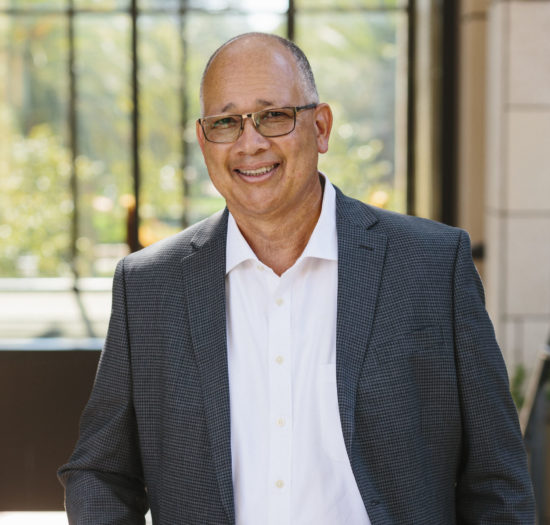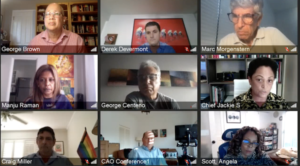Essay: Can Santa Monica Finally Make Progress?
Essay: Can Santa Monica Finally Make Progress?

Stanford Center for Racial Justice continues this four-part retrospective from our Executive Director George Brown as part of our On The Ground Series on Police Reform in Santa Monica, California. In Part Four below, he reflects on the pathway forward for those interested in reasonable methods of improving public safety in Santa Monica.
PART FOUR: HOW CAN SANTA MONICA MAKE PROGRESS ON IMPROVING POLICING AND PUBLIC SAFETY FOR EVERYONE?
How do we move forward?
For more than two years, Santa Monica reformers have been frustrated in our attempts to implement effective oversight and improvement of its public safety operations. This frustration has many complex roots, which have been discussed in my recent essay. A combination of toxic politics, undue political influence by the police union, lawsuits, bureaucratic capture by city officials, unreliable affluent progressive voters, and implicit and structural racism have all combined to prevent the city from achieving the basics of common-sense independent oversight of its largest city department.
These challenges are not unique to Santa Monica. Many efforts at independent civilian oversight of policing have failed or have been undermined and frustrated over the past decades. Despite these frustrations, cities around the country are continuing to implement new and novel approaches.
It’s also notable that the challenges within Santa Monica are not limited to achieving independent oversight of public safety. The structure of our local government, combined with the underlying social, political and cultural environment, have resulted in many other challenges that frustrate our ability to accomplish meaningful progress – and successfully mediate our differences – on numerous important policy issues.
So, where do we go from here? If the residents of Santa Monica want their community to be both safe and fair, and want their city to be known as a leader in “progressive policing,” what needs to happen?
City Leaders (City Council, City Manager, City Attorney)
Santa Monica’s city government is organized similarly to most local governments in California. We have a City Council that holds regular meetings twice a month and is responsible for setting overall policy. The Mayor is a member of the Council and is selected by vote of a majority of the Councilmembers. City Councilmembers are paid a modest stipend, rendering the job to be almost the equivalent of volunteer work. Despite this, the City has benefited over the years from many long-term dedicated Councilmembers who devote substantial amounts of time to serving our city.
The City Council is directly responsible for hiring two key leadership positions: the City Manager and the City Attorney. This structure was implemented in the middle of the last century as a mechanism to make local government less susceptible to corruption and to allow for professional management of cities.
Notably, the City Manager is responsible for hiring the Police Chief, while the City Attorney is generally responsible for prosecuting local misdemeanors against civilian defendants. Because the City Attorney’s office regularly uses police officers to support their cases, they are not well positioned to investigate or prosecute officers or criticize the police.
Here are steps that city leaders should consider:
Overcome toxic public discourse. City leaders could form a task force to help educate and train people on improving the nature and quality of public debate about important policy issues. Expert mediators and facilitators could be hired to develop customized training within the city. There could be some sessions that would include only internal city staff, or some or all of the Councilmembers. There could be other sessions where community leaders from a variety of sectors could be invited to participate in seminars or interactive workshops to develop skills in effective dialogue across political difference.
Study effective oversight. City leaders should engage in one or more study sessions about how to achieve effective oversight of public safety. These sessions should be informed by expert input about civilian oversight that explains the history of oversight and its challenges throughout the United States.
Support the Public Safety Reform and Oversight Commission (PSROC). City leaders should provide the necessary infrastructure to support oversight of its most expensive and most important city department. This requires proper staffing, effective training that is unbiased, independent expert guidance for the Commission, assistance with setting and managing agendas, transparency with the public, and a commitment to working with the Commission on the most important public safety issues facing the city.
Set performance goals for the Police Chief. Well managed organizations should have relevant and measurable performance goals for their employees, especially at the management level. The City Manager should be required to include relevant annual performance goals for the Police Chief that include measures for meaningful community engagement and for promoting the success of the oversight commission. These goals should be made transparent and made available to the public.

Community Leaders (Progressive groups, business organizations, neighborhood associations, etc.)
Santa Monica should celebrate the fact that we have a robust set of organizations committed to advancing the city’s interests and policy goals. The fact that there are often stark disagreements should be recognized as a sign of an engaged citizenry that cares about the city and its future.
Here are suggestions that community leaders should consider.
Meet with each other across issues. It is challenging to lead an organization that seeks to advance a particular policy issue or goal. Often there are too few people able to invest their time, along with limited financial resources, leaving a lot of the work to a small group of committed members. This leaves little room for working on issues outside of the organization’s focus.
I suggest that community leaders make an effort to meet with leaders in other local organizations who have different agendas, or even conflicting agendas. It is often surprising how many times people who believe they have stark differences also find that they have many common goals, values, and interests. Pursuing deeper personal relationships among leaders outside of their core network may help reduce the overall level of conflict and toxicity in our city-wide politics. It may also lead to new and innovative coalitions of interests.
Participate in PSROC meetings and agenda setting. Community leaders should regularly attend PSROC meetings and provide public comment. They should encourage others to attend, as well. The Commissioners should be pressed to include relevant issues on the agenda and to be responsive to the interests of members of the public.
Identify key agenda items for the PSROC. Community leaders should regularly consider issues for the PSROC to address and make sure to communicate those topics to the city and to the Commissioners. I would suggest the following important topics, in addition to ongoing attention to the latest public safety issues:
- Hiring and training practices
- Policies to reduce racial, ethnic, gender, and gender identity bias
- Data transparency regarding Racial Profiling Act data
Help address key public safety concerns of residents and businesses. Community leaders should take into account the various public safety issues expressed by different segments of the community and help the Commission by hosting public dialogue about those issues. That public dialogue should include people who have differing perspectives, with a goal of trying to understand the facts and a range of solutions that are oriented towards addressing the facts and moving towards practical solutions that address the challenges.

Promote public education on key reform topics. During the pandemic, we quickly adopted new technologies for communicating – in particular Zoom and other video meeting capabilities. These new methods of communicating have opened up additional opportunities for collaboration and organizing with people that are outside of the local area. Community leaders should consider finding experts and others around the country who have knowledge about a range of topics relevant to Santa Monica and public safety oversight and reform. We should arrange a series of workshops on these topics and invite the public to participate. It is possible that ideas will percolate out of these sessions and can be shared with the Commission or other city officials for potential action.
Share Your Thoughts
Public safety oversight and reform is complicated and challenging, perhaps more so than it should be. I have offered my thoughts and suggestions about the nature of the challenges, its underlying reasons, and some ideas on next steps over the span of my four essays. I now want to invite others to weigh in. If you have thoughts, ideas, and perspectives about the issues we have addressed in this first On The Ground Series: Santa Monica Police Reform, please email us at scrj@law.stanford.edu.
We expect to continue this work by chronicling stories of other racial justice reform efforts that have been underway in recent years. If you would like to suggest a reform effort for an upcoming On The Ground project, please let us know why your group or initiative has an important, useful, and educational story for us to share.
Photo sources: Santa Monica City Hall from Wikimedia Commons; Zoom screengrab from PSROC meeting
